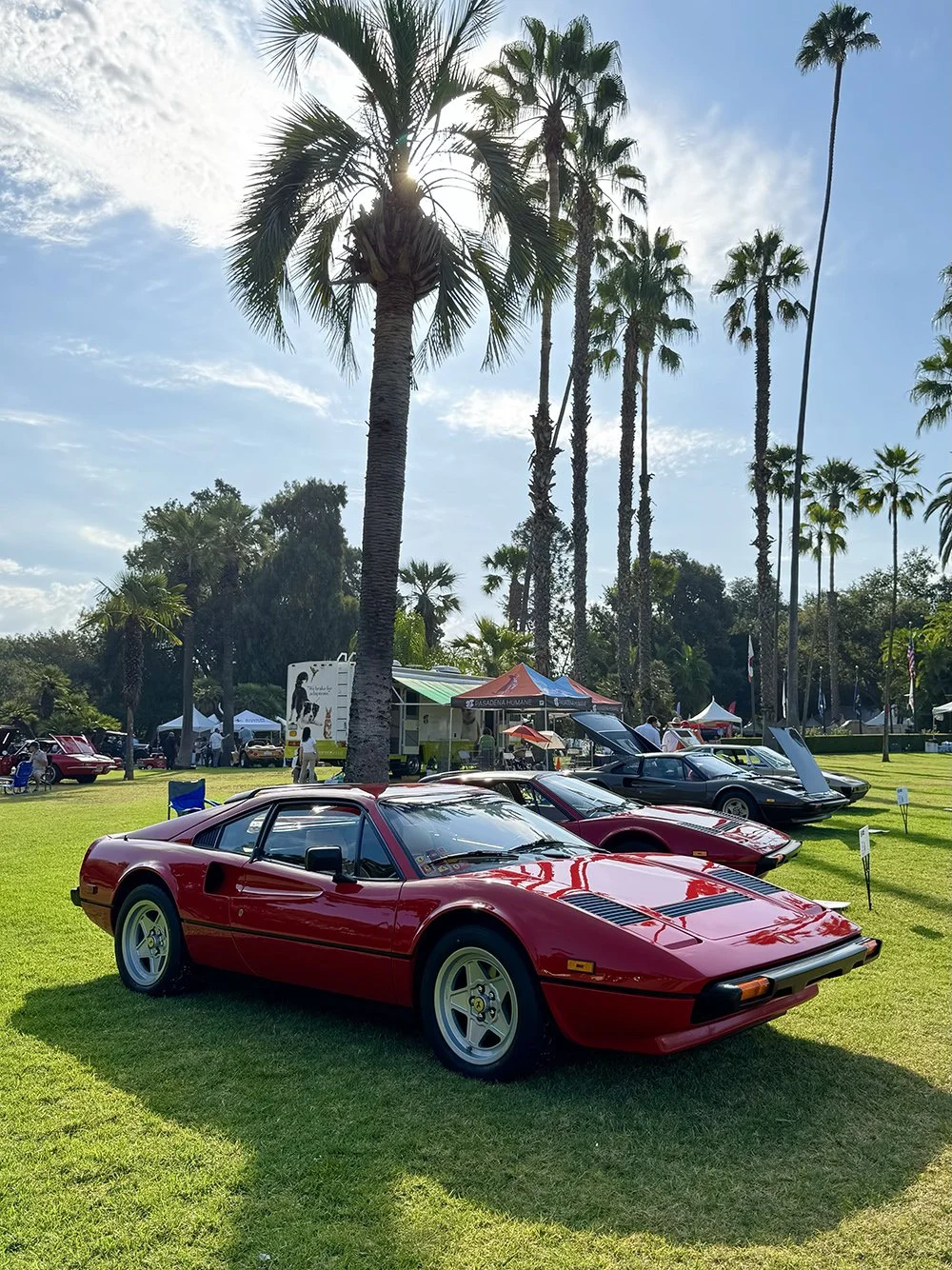I’ve always been fascinated with the Art Deco era, which embodies the ideas of glamor, luxury, and playful optimism in its art, music, and design.
During this time, the automobile was at the forefront of technology, and represented speed, and excitement. Aesthetically, they differ greatly from their modern counterparts. Their forms are broad, and sweeping. Their proportions are flowing, with vast hoods, short trunks, and narrow bodies punctuated at the corners with voluptuous fenders over massive wheels/tires. Though these attributes are sometimes echoed in more modern designs, it is interesting to study them as implemented on cars of the 1920’s and 1930’s (in their purest form).
Similar to some of my more recent explorations, my aim for the first version of my piece (upper left) was to pay homage to advertising art of the era. The nighttime scene evokes a sense of mystery, a cityscape background lends an air of sophistication, and a plane represents speed and travel. Unlike many of my other pieces, I excluded much of the car body in order to put focus on the front fender – where I found the most interesting shape/volume. To further emphasize this shape, I reduced the contrast, color saturation, and brightness of the environment. Lastly, I added typography that identifies the car, to evoke more Deco aesthetics.
I was pleased with the finished image, but also inspired to explore a more abstract, less “period correct” version (upper right). First, I removed the figurative environment to decouple the car from a specific space and time, and to minimize distraction from the fender shape.
Later, I introduced a second car to the image (the Talbot Lago Teardrop, because its front fender form was similar to the Bugatti’s). With its introduction, the piece was no longer specifically about the Bugatti, but more about cars of the era. At first, I rendered the Talbot Lago as a ground plane reflection of the Bugatti. But as I played with its location, I found that by flipping it horizontally I could position to create a visual interplay between its fender, and the Bugatti’s… encouraging the viewer’s eye to move between the two forms. With the two cars’ juxtaposed, I rotated them to an extreme angle to imply movement, and to further abstract the cars. Finally, I wanted to include a type element in the piece. But rather than identifying the cars, I decided to acknowledge the shapes. “French Curves” seemed like an appropriate phrase given the origin of the two cars, and the emphasis of their fender forms.
Fine art prints of both of these pieces will be available soon. Does one speak to you more than the other? Let me know!


























































































